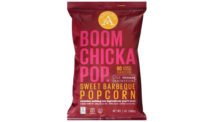There’s nothing new about the idea of “clean label” products. I’ve been covering the food industry for nearly two decades now, and it has factored into discussions throughout that time.
In fact, the initial groundswell of societal momentum behind “clean” foods dates back to Rachel Carson’s seminal “Silent Spring” in 1962. The environmental, anti-pesticide movement that arose in the wake of its publication popularized organic—which has close ties to clean label—opening the door to state-level regulation, starting with Oregon in 1973 and eventually leading to federal regulation by USDA in 1990.
But over the past few years, discussions have intensified and grown more frequent. “Natural” has fallen behind due to lack of clarity. People are drawn to clean and clear, short and simple ingredient statements.
Food ingredients have increasingly come under the microscope as more the general population tries to make sense of food science. Bit by bit, they’ve been singled out. Artificial colors. Artificial flavors. Preservatives. Synthetic sweeteners. Trans fats. Synthetic emulsifiers or dough conditioners. Anything with potential connections to genetic modification.
Even the type and degree of product or ingredient processing can come under scrutiny, with items like bromated flour hitting the Whole Foods Market “Unacceptable Ingredients for Food,” meaning that the retailer won’t even carry products that include ingredients from the list. Panera Bread has introduced and promoted a similar list. The word continues to spread.
Regardless of how you feel about the scientific validity of the various details surrounding clean label, it’s here to stay. “Traditional” products using artificial flavors and colors, synthetic preservatives, etc. will continue to find an audience. Brand loyalty and price sensitivity are strong purchase motivators. But clean label will continue to capture more market share.
Of key importance is the fact that clean label is no longer solely the domain of the Whole Foods set. Back in October 2015, discount grocery chain ALDI announced that it was removing artificial ingredients, PHOs and added MSG from all of its of its store brand products—which comprise most of the selection at the chain’s stores.
In the release announcing the move, Jason Hart, CEO of ALDI U.S., declared: “At ALDI, we are dedicated to the well-being of our customers by providing high-quality groceries at the lowest possible prices and offering foods shoppers can feel good about serving their families. Our decision to remove these ingredients from all of our exclusive brand foods delivers on our ongoing commitment to meet the evolving preferences of our customers. Since more than 90 percent of the products we sell are under our exclusive brands, eliminating these ingredients will have a real impact on the over 30 million people who shop in our stores.”
ALDI is also increasing its organic sourcing. And its U.S. business footprint is steadily expanding.
During the recent IFT show in Chicago, clean label formed the central focus of the majority of my conversations with snack and bakery ingredient suppliers. It’s the top concern in new product development. And we have more ingredients and solutions at our disposal than ever before.
And more solutions are needed, because varying consumer perspectives on clean label can relate to a wide range of rubrics. It can mean gluten-free and allergen-free, such as no soy or dairy. It can have ties to better-for-you foods. It’s everything non-GMO. It’s using as many whole-food ingredients as possible.
Be assured that clean label foods will continue to see refinement in the public eye as more folks are drawn into the fold. As many said during IFT, it’s getting to the point that going clean label is simply the price of doing business today.





